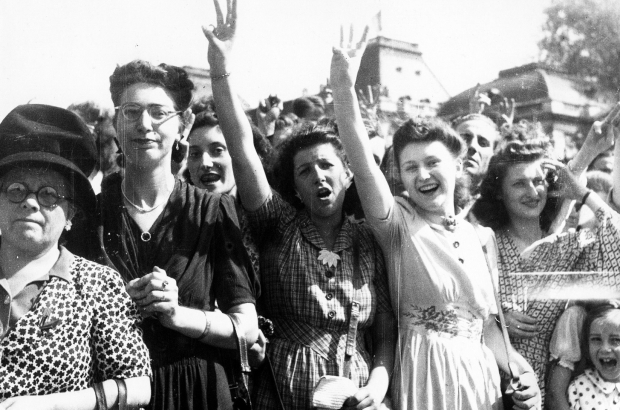- Daily & Weekly newsletters
- Buy & download The Bulletin
- Comment on our articles
Belgium Remembers: Programme commemorates liberation by WW2 Allies
On 2 September, Belgium marks 75 years since the Allied troops began the liberation of Belgium from German occupation. It was the beginning of the end of the Second World War.
A series of events all over the country, brought together under the banner Belgium Remembers 44-45, celebrates this recapturing of freedom. While a smattering of events have already launched, things really get going this weekend.
The programme of events commemorating the liberation will conclude on 8 May – Victory in Europe Day. The programme, co-ordinated by the War Heritage Institute in Brussels, includes a large number of new exhibitions.
The first Belgian city to be declared free of German troops was Mons, in Wallonia. It happened on 2 September, about three months after the Allies landed in Normandy on D-Day.
Euphoria
In the following days, American and British troops triumphantly entered Brussels and Antwerp. Polish and Canadian soldiers joined Belgium to push back enemy lines in West and East Flanders. Resistance groups played an important role as well.
“The Allied troops were received by the locals as true heroes, and the atmosphere was euphoric,” says Chantal Kesteloot of the Centre for Historical Research and Documentation on War and Contemporary Society (Cegesoma) in Brussels.
Soma has collected photos of the festive liberation of Brussels in the book Bruxelles: ville libérée. A selection will be exhibited at Sint-Goriks Halls in the centre of the capital.
The euphoria didn’t last forever, though, notes Kesteloot. “The feelings of brotherhood diminished during the months afterwards, as the continued presence of the Allied forces caused problems, and the supply of goods remained difficult. There was, for example, indignation over accidents caused by Allies, friction over promiscuous behaviour of certain soldiers and racism towards black soldiers.”
Following the first liberations, battling continued, most notably around the Scheldt estuary and off the Flemish and Dutch coast. The Allies needed to clear the Western part of the Scheldt river and the port of Antwerp quickly, because supplying goods from the French coast cost too much time and resources. On 28 November, Allied ships finally docked in Antwerp.
The Canadians played a key role in these specific clashes, as did the Belgian resistance. “Resistance groups managed to protect the port from major damage, so it could be rapidly used by the Allies,” explains Kesteloot.
Still, German forces refused to surrender after this defeat and bombed the city. They attempted to recapture Antwerp with a large-scale offensive from the Ardennes, which included the famous Siege of Bastogne. It took until the end of January 1945 before the Allies managed to wipe out most of the progress made by the Germans.
War myths
Apart from contributing to a number of commemoration events and exhibitions, the Cegesoma is developing the Belgium WWII website with reliable and accessible historical information. One goal of the site is to counter long-standing myths of the war.
One persistent myth, still used for political goals today, is that of a stronger post-war punishment of collaborators in Flanders than in French-speaking Belgium. “There actually was a stronger demand among French-speakers for a severe response,” says Kesteloot, “leading to many quick death sentences being carried out in Brussels and Wallonia.”
The Belgium WWII site also sheds light on remarkable stories like that of Brussels jazz artist Stan Brenders, whose career flourished during the German occupation but who fell out of grace after the liberation. He then ran the popular jazz bar L’Archiduc in the heart of Brussels, where his piano still stands.
This is the first of three articles on Belgium Remembers. Check back this week for interviews with the War Heritage Institute and our pick of the best events and activities
Photo: Citizens celebrate the liberation of Brussels in September 1944 ©Belga Archives

















